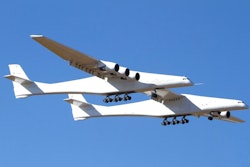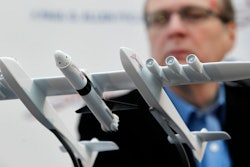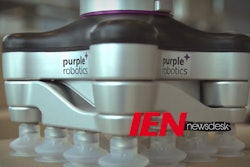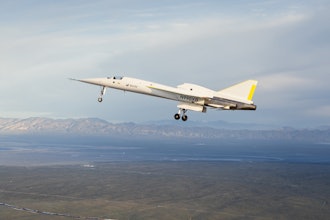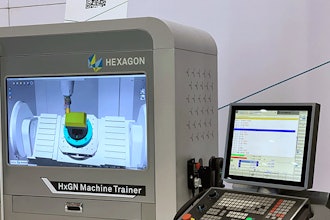Human-Controlled Cobots
Researchers at MIT's Computer Science and Artificial Intelligence Lab (CSAIL) have possibly found a new way for factory workers to telecommute to work. Essentially, you put on a virtual reality (VR) rig while you're still in your pajamas, and operate a collaborative robot (cobot) remotely.
Using an Oculus Rift headset, the worker would operate the machine (Rethink Robotics' Baxter in this case) in a virtual control room. The display not only provides a view from a camera on the robot's head, but also views from cameras in robotic grippers.
In this particular example, you see the user trying to put two over-sized LEGOs together. The video is actually in double time, so we clearly still have a ways to go before we're making assemblies from our couch.
The robot is even capable of using hand tools. In this example they use a staple gun. The team's approach solves common VR problems such as delays that cause nausea and headaches, by making it seem like you're actually inside Baxter's head.
Next, the team wants to make the VR system more scalable so that multiple users can operate disparate robots.
Magic Legs
The Offices of Naval Research (ONR) is working with the Naval Research Lab, Walter Reed, and the University of Michigan to develop smart prostheses. A common problem with prostheses is that they simply are not comfortable. They can irritate the skin at the connection point, causing abrasions that can lead to infections. Companies have a tried many different designs to improve the users quality of life, including using vacuum pumps, which not only holds the prosthetic on, but also increases circulation and comfort.
However, this solution is a little smarter. They call it the Monitoring OsseoIntegrated Prostheses or MOIP. It provides sensors that alert users on potential wear and tear.
The MOIP doesn't connect to limbs like a traditional prosthetic socket. Rather, it uses an osseointegrated prosthetic, a titanium fixture that is implanted into your bone. Bone grows around the implant, which is what they call the “osseointegration”, but it leaves behind a small metal connector that provides a more stable connection with the prosthetic. Because the metal sticks out of the leg, it is at constant risk of infection, so the MOIP system also focuses on detecting and preventing infections.
Basically, researchers put a smart skin on to your limb that couples with sensors in the prosthetic. The array tracks changes such as body temperature to monitor for possible infection. It will also sense how the bone is healing around the implant, which will help speed recovery time after surgery.
Intelligent prostheses could be the next generation of devices that not only improve the life of soldiers wounded in combat, but also the millions of Americans who live with an amputation. While the prototype has been successfully tested, the team is now working on a next-generation model that will be used in clinical trials in 2018.
How Massive Stratolaunch Stays Light Enough to Fly
How do you get the biggest aircraft in the world off of the ground? Well, it helps if you use composites instead of metal, although when it comes to Paul Allen's massive aircraft, it technically hasn't left the ground yet. So, how do you most likely get the biggest aircraft in the world off of the ground?
Scaled Composites, the manufacturers behind the Stratolaunch, the world's largest all-composite aircraft, used Hypersizer software from Collier Research to automate design, stress analysis, and sizing optimization.
Stratolaunch is not only the world’s largest aircraft by wingspan (385 feet), but it is almost entirely made out of composite materials.
The aircraft has a pair of fuselages that are connected by a giant single wing. It is powered by the six engines that the company recently test fired out in Mojave, CA. The first launch should come as soon as 2019, but it is going to take a lot to get this aircraft up in the air with a 550,000-pound, after all it needs 28 wheels just to get around on the ground.
Using the HyperSizer optimization software, Scaled Composites fine tuned the aircraft's fuselage and wing structure. For example, deflection limits were a significant factor to be taken into account. The panels of the duel fuselages were sized for strength, stability and honeycomb sandwich failure modes.
Through the use of this HyperSizer software, the stress team was able to use automated failure analyses which provided everything from free-body analysis and discrete laminate sizing, to ply-based composite failure analysis and honeycomb sandwich analysis methods.
According to Collier Research president Craig Collier, this type of software helps figure out if structures are producible, and identify any manufacturing issues. Here’s hoping they catch them all before this thing flies.




